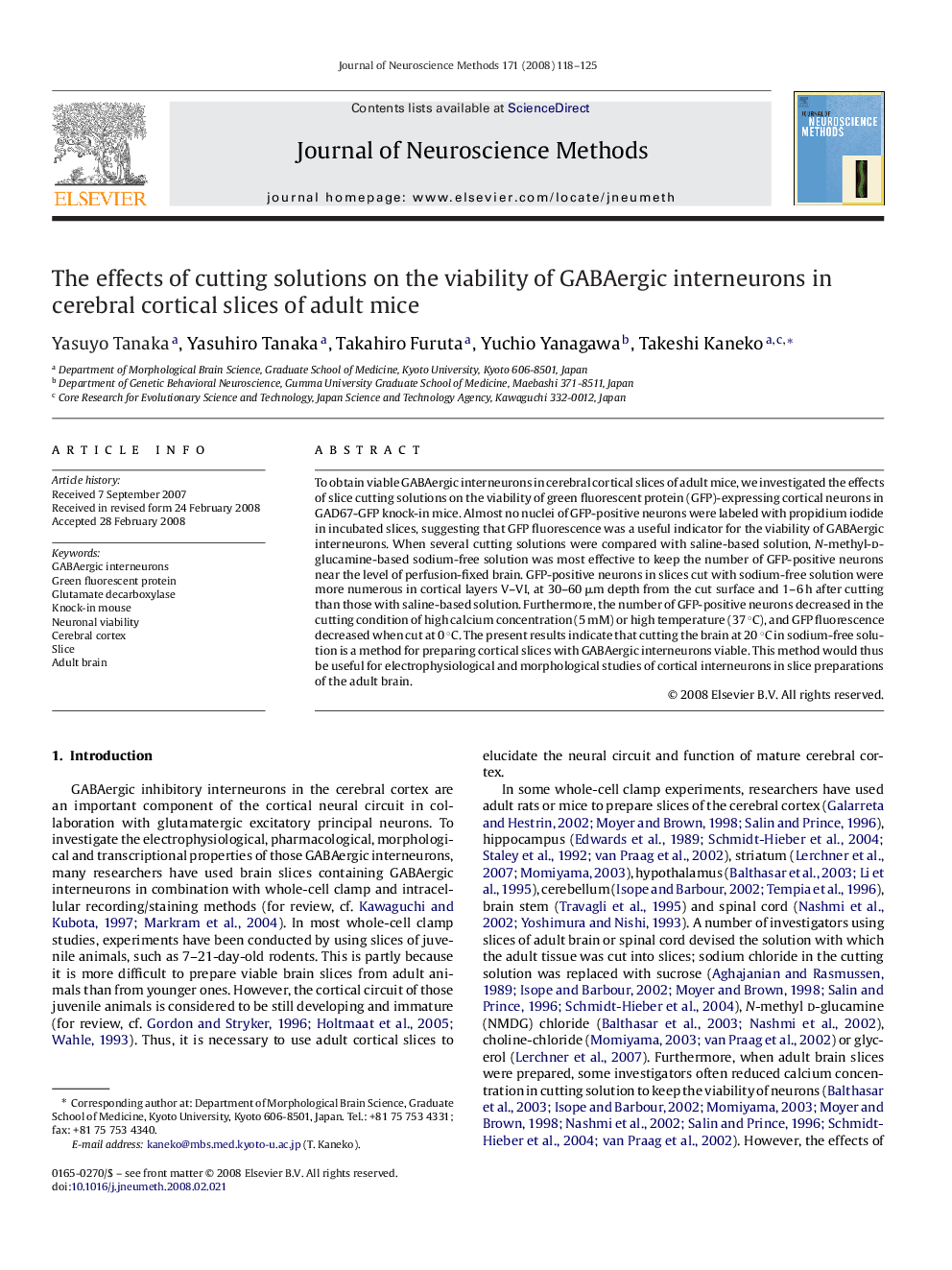| Article ID | Journal | Published Year | Pages | File Type |
|---|---|---|---|---|
| 4336188 | Journal of Neuroscience Methods | 2008 | 8 Pages |
To obtain viable GABAergic interneurons in cerebral cortical slices of adult mice, we investigated the effects of slice cutting solutions on the viability of green fluorescent protein (GFP)-expressing cortical neurons in GAD67-GFP knock-in mice. Almost no nuclei of GFP-positive neurons were labeled with propidium iodide in incubated slices, suggesting that GFP fluorescence was a useful indicator for the viability of GABAergic interneurons. When several cutting solutions were compared with saline-based solution, N-methyl-d-glucamine-based sodium-free solution was most effective to keep the number of GFP-positive neurons near the level of perfusion-fixed brain. GFP-positive neurons in slices cut with sodium-free solution were more numerous in cortical layers V–VI, at 30–60 μm depth from the cut surface and 1–6 h after cutting than those with saline-based solution. Furthermore, the number of GFP-positive neurons decreased in the cutting condition of high calcium concentration (5 mM) or high temperature (37 °C), and GFP fluorescence decreased when cut at 0 °C. The present results indicate that cutting the brain at 20 °C in sodium-free solution is a method for preparing cortical slices with GABAergic interneurons viable. This method would thus be useful for electrophysiological and morphological studies of cortical interneurons in slice preparations of the adult brain.
